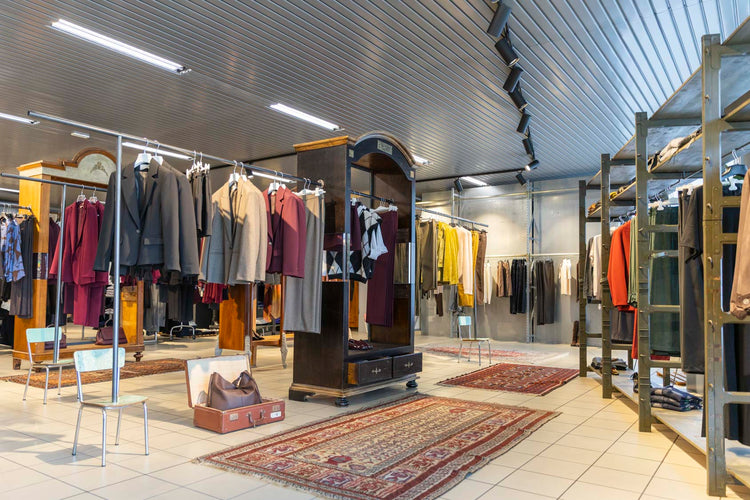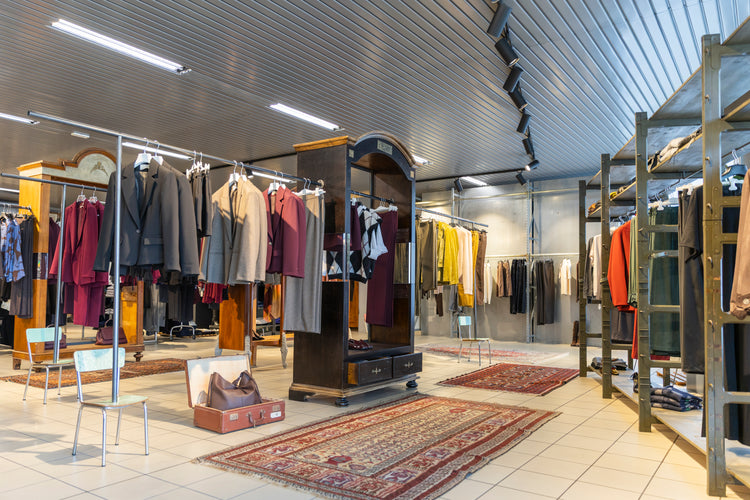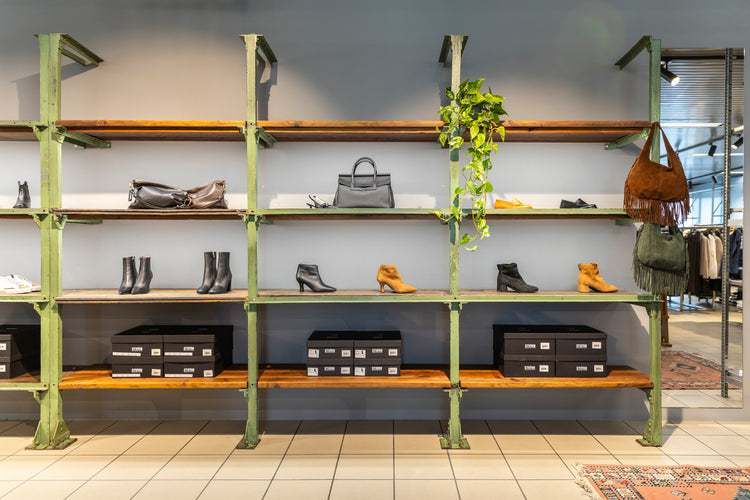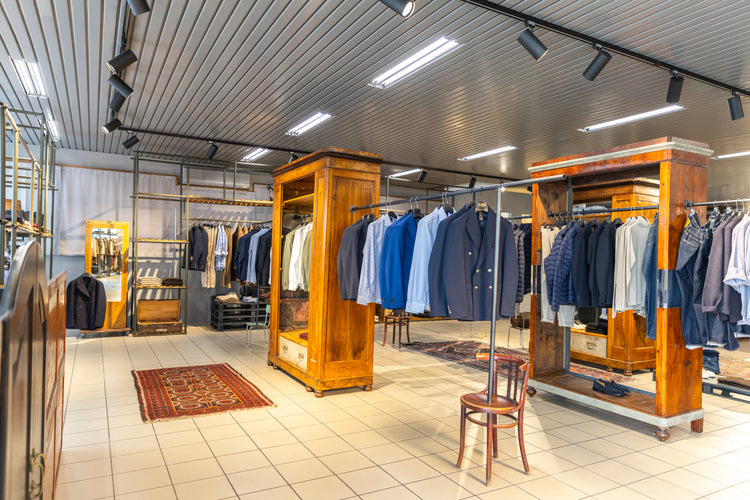In the heart of the district that shaped the history of Italian fashion, between Asolo, Bassano del Grappa, and Montebelluna, STIMM Altivole transforms a brutalist industrial shell into a sophisticated dialogue between different memories.
Just steps from Carlo Scarpa's Brion Tomb and Villa di Maser, this concept store demonstrates that even the most austere architecture can embrace the poetry of reuse.
The contrast is immediate and sought after: the concrete frame of the building acts as a neutral frame
to a display that celebrates fine craftsmanship. Antique wardrobes are stripped of their original solidity—backs and doors disappear—to become structures
areas where vintage wallpapers interact with plexiglass inserts.
The brass friezes on the cornices are not nostalgic decorations, but the expression of an aesthetic that elevates the archaeology of the furniture to a contemporary artistic installation.
The industrially recovered shelves coexist with tribal Caucasian carpets of rare beauty, creating an aesthetic tension where two souls of memory – the working one and the
the aristocratic one—blend seamlessly. Refined fashion, high-quality leather footwear, iconic sneakers, and accessories find a stage in this setting that enhances both the product and the context.
STIMM Altivole doesn't hide its brutalist body; it uses it. It transforms it into a blank canvas where upcycling becomes the brand's preferred language. In a region that has given birth to great creative talents who have written pages of fashion history, this store demonstrates that the most beautiful mistake is the one that manages to bring together seemingly irreconcilable opposites: the rough and the precious, the formal and the informal, the industrial and the artisanal, the vintage and the contemporary, lost function and rediscovered beauty.
Because true contemporary luxury doesn't erase stratifications, but enhances them all, in a balance where every memory—even the humblest—finds its own aesthetic dignity.



